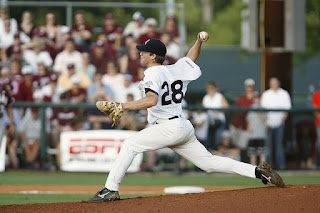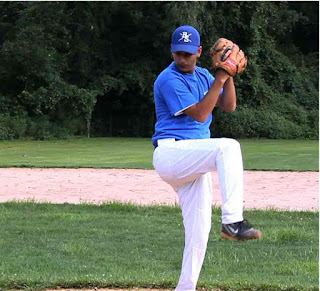Your Pitching Coach.
Your Pitching Coach’s job is to teach you how to keep your
Team close enough to win. A Pitching Coach tells you what he thinks your motion
should look like and uses your pitch results to remind you about what you need
to do to improve your next pitch outcome.
He sees your pitch results, he sees what you do, but, unless
he knows how to interpret the way your body reacts to itself, he doesn’t
realize how difficult he makes it for you to accomplish the things he wants you
to achieve.
A Pitching Analyst.
As a pitching analyst, I know
what “good” pitching looks like and, better yet, understand how to eliminate
whatever is blocking you from achieving your pitching dreams.
I breed confidence,
accelerate your development and, as we talk about your pitching, give you a
clear vision of what and why you do everything you do.
My involvement is short yet
quickly introduces every pitching skill you need to show you’ll be very competitive
at your next-level right now!
What does a pitching analyst do?
There’s always a reason your pitch misses your Catcher’s
target outside his body. Your miss tells me your pitching motion is sick.
Missing your Catcher’s target outside his body 2 pitches in
a row for no known reason means you have a disease and, unless you find for a
cure, your competitive pitching career is about to die.
If anyone you know realized your motion was sick, you
wouldn’t find yourself missing your target by so much so often.
You want the cure what ails you; you need to ask for my
help.
A pitching analyst makes you look good.
Everything I present will show your Coach what he wants to
see, but I’ll teach you how to produce what he wants without talking about it
or you ever thinking about it.
Instead of wasting your bullpen time working on your muscle
memory, you’ll use your bullpen sessions to sharpen and reinforce our focus
and, when you get the call, you’ll dazzle your Coach, your Team and the crowd.
You’ll show your Coach what he wants to see, you’ll keep
your Team close enough to win and you’ll make yourself and your Coach look very
good.
People may critique your outing, but no one will criticize
your performance and, most likely, you’ll earn even more mound time.
Sign up today for a risk-free, Pro Pitching Institute
Membership trial.
Skip
Fast,
Pro Pitching Institute
Pro Pitching Institute
Pitching
Analyst
Copyright © 2018, Pro Pitching Institute.






